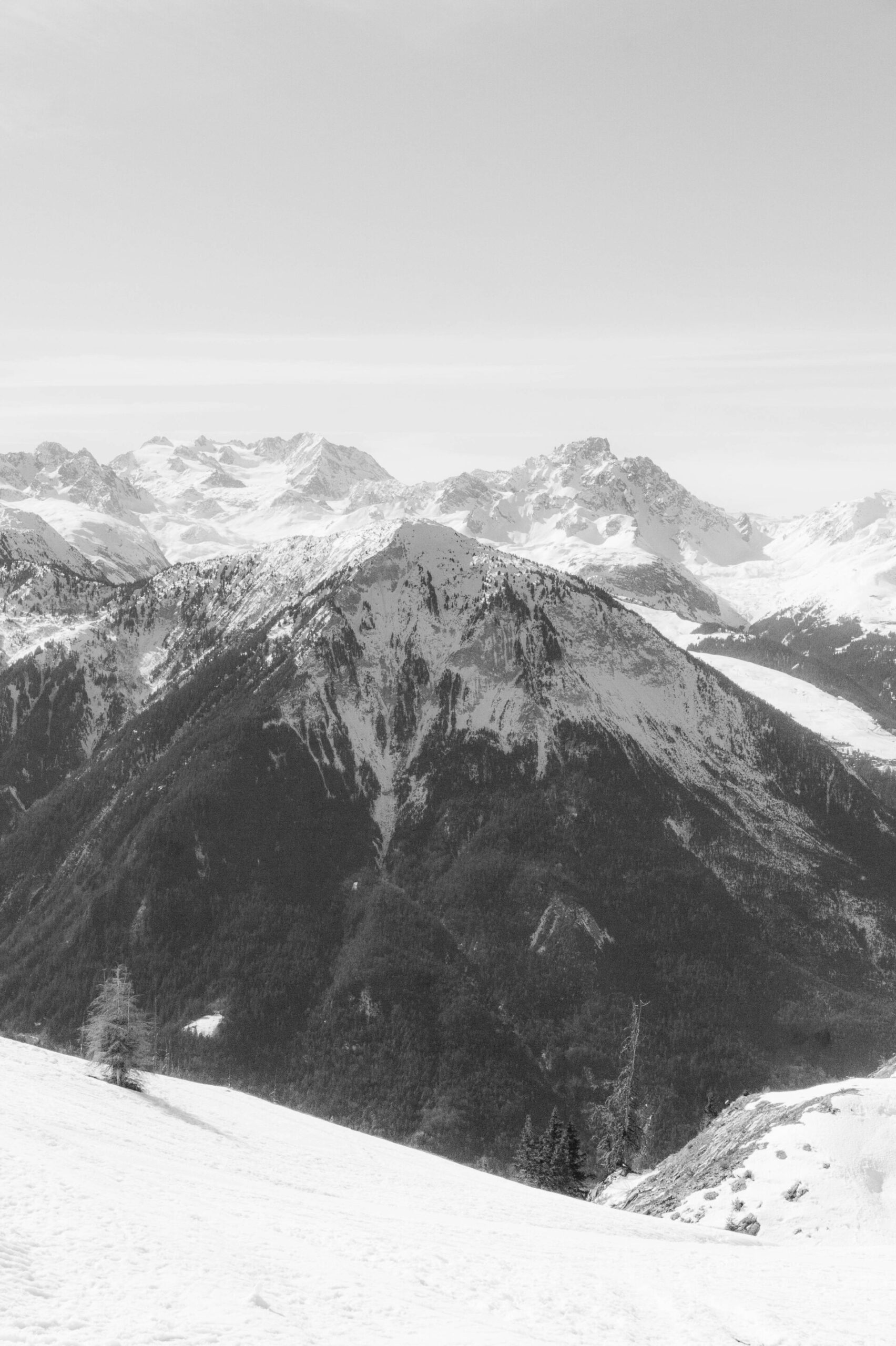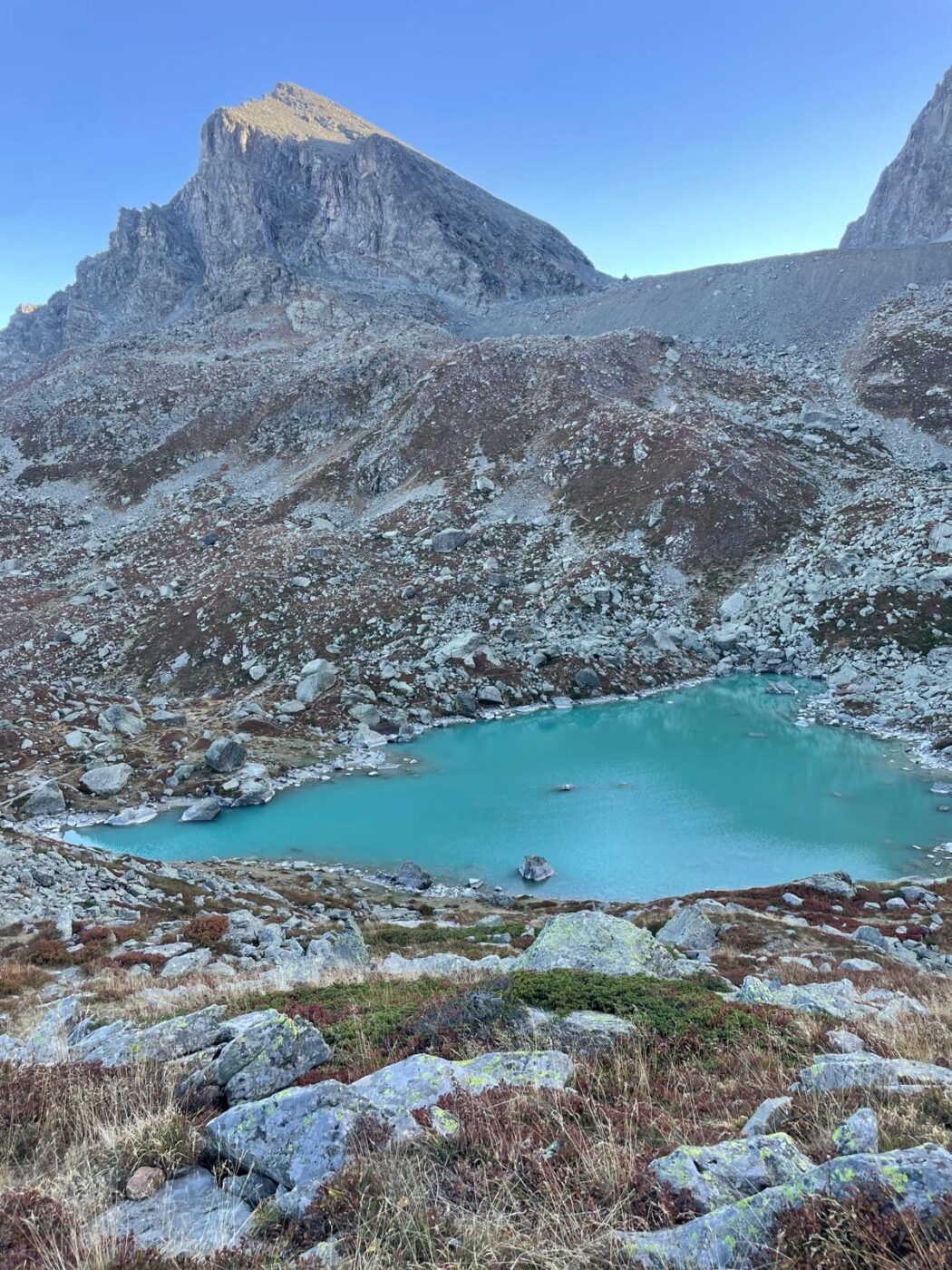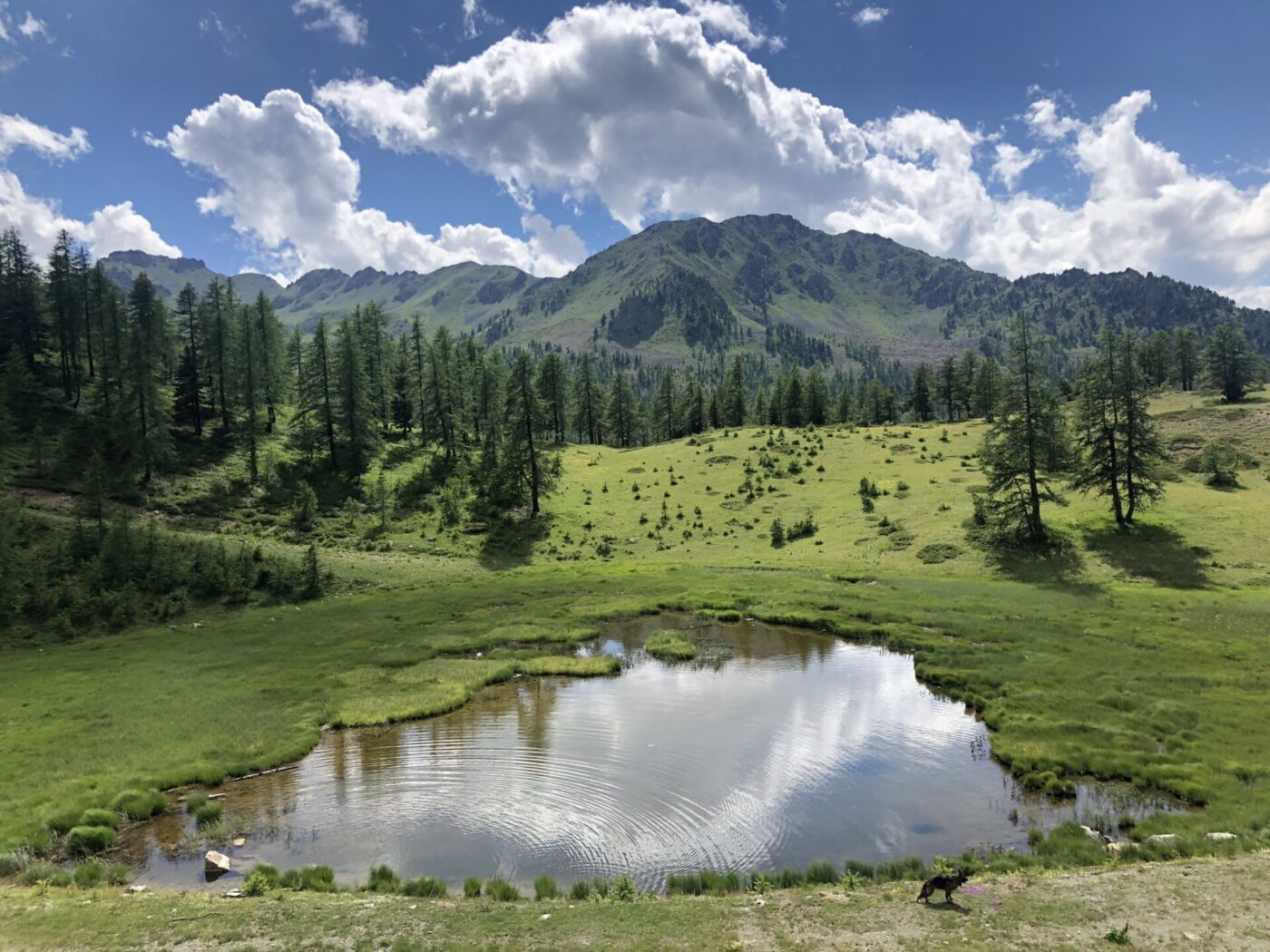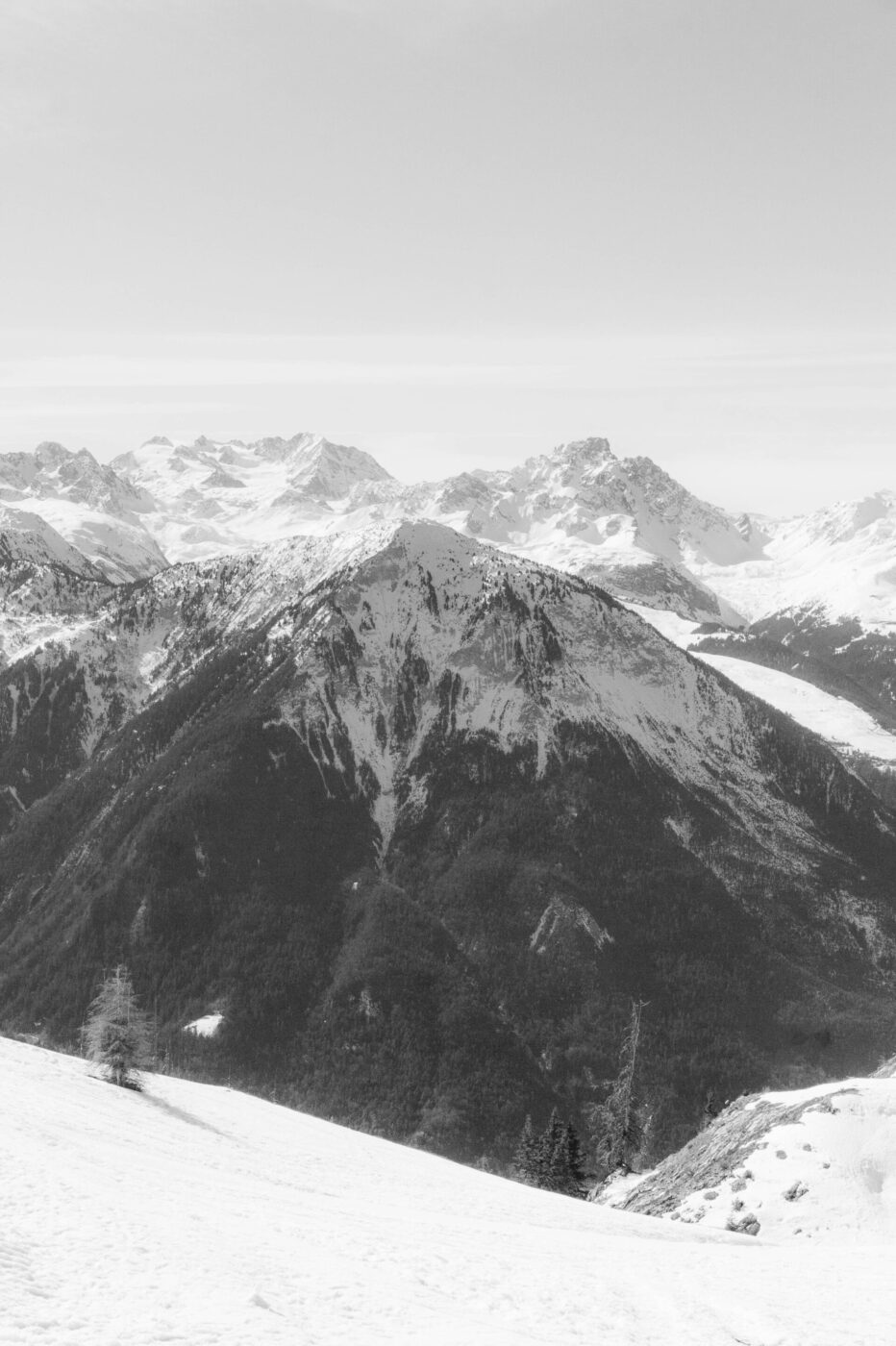A wall of rocks, a crown of not-so-snowy peaks piercing the sky, sometimes puncturing the clouds. This is what the Alps look like when you look at them from the plains: half menacing, half protective, definitely immovable and unbreakable. A clear border behind which, in my case, lies France.
The mountains of southern Piedmont, those of the province of Cuneo and Turin, are the ones I grew up with, often looking at them as if they were a screensaver, occasionally taking the trouble to go and get to know them more closely. And so it was that those mountains, almost abstract in their grandeur, began to fragment into flowering fields bustling with butterflies, pastures in which cows and their cowbells lazily dangle, stony ground that hides vipers in the sun, the shrill calls of marmots, and the gurgling of streams in search of an icy black lake.
Above all, the deeper one goes into the Alps, the more one realizes that they are not a wall, but a tangle of paths, and that these paths are also threads through the centuries, embroidering what is, in the end, a blanket wrapping these places with stories.
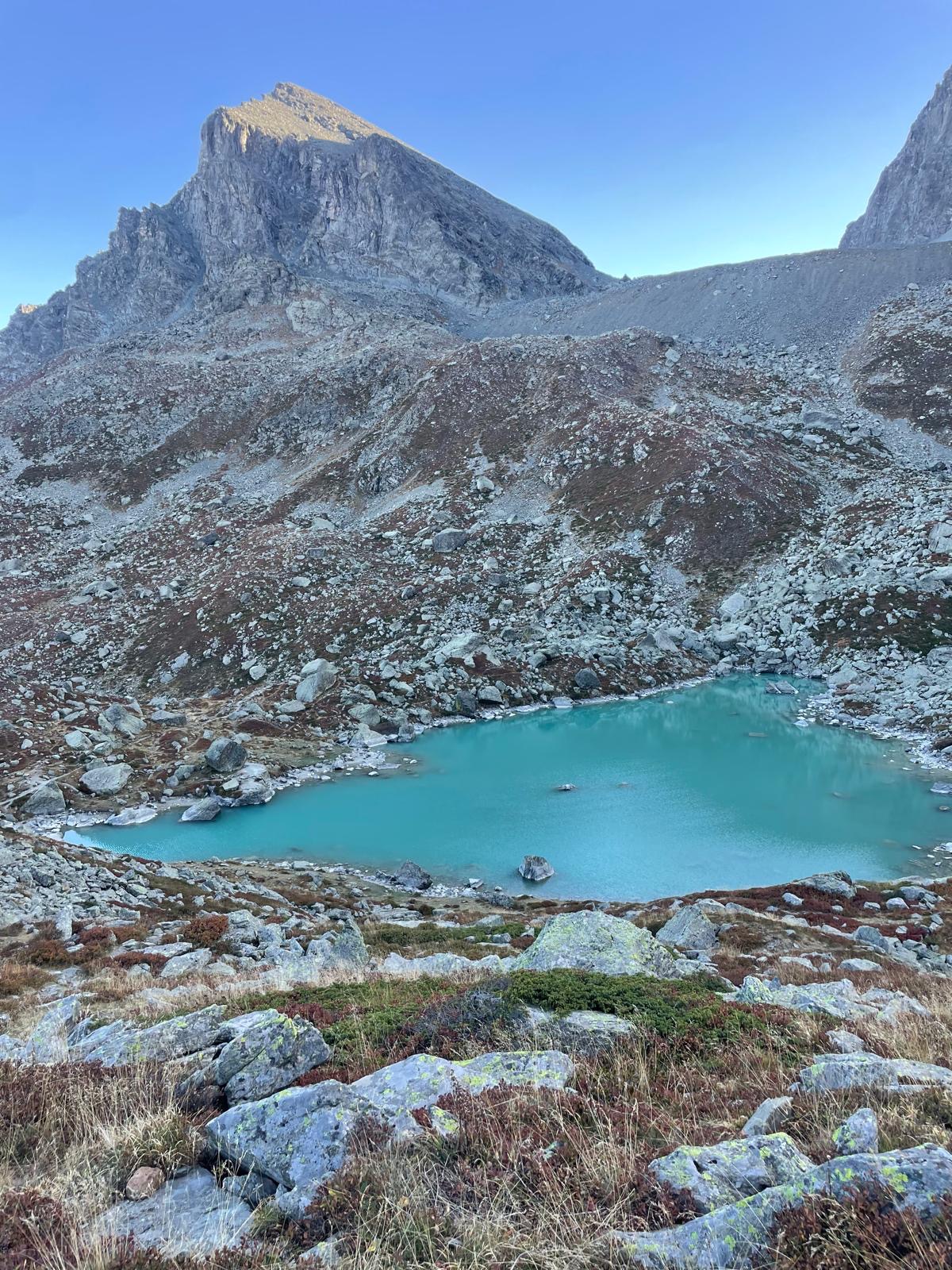
Photo by Katarina Marsiglio
Hidden Valleys, Hidden Gems: How to Experience the Trails like a Tourist
This remote corner of southwest Italy, with valleys green and wild, is as beautiful as it is little-known and little-exploited for tourism purposes. It does not have the innate tourist vocation of Trentino or the glam of Courmayeur and Cortina.
The Maira Valley, though, is one of those shy beauties that only few people know. But here you can trek among centuries-old larches, stopping in a forest where the shade suddenly becomes thicker, cooler. You can set out to worship a work of art that will inspire your more mystical side: the 1493 paintings of Hans Clemer in the marvellous Romanesque Church of Santa Maria Assunta of Elva. This masterpiece has earned the Flemish painter the title of “Master of Elva”, though his work can be found throughout the valley. Although most of his frescoes are located in Saluzzo, the capital of the Marquisate at the time, it is in this remote church that his Crucifixion and scenes from the life of Mary become particularly celestial in contact with nature. Here, the tiny center’s alleyways open onto the Alpine amphitheater of the Cottian Alps, the Pelvo d’Elva triumphing from its 3,064-meter height. After admiring Clemer’s masterpieces, follow one of the many mountain paths, again ready to unfurl among the lesser-known hamlets of the valley.
In addition to the trails, there is a whole road you can follow to pick up one thread of this skein of mountain tales: la Via del Sale. Though it’s named a “road”, la Via del Sale is a completely unpaved trail, between 1,800 and 2,100 meters above sea level, that follows the Alpine watershed along the French-Italian border, crossing daring alpine passes and hairpin bends from Limone Piemonte, in the Province of Cuneo, to Ventimiglia, in Liguria. These 30 kilometers are best covered in summer, on foot or by bicycle. You should keep your eyes wide open, especially in the stretches where the valleys suddenly open up to reveal ravines that have held armies and populations over the centuries, but even if you decided to follow the road with your eyes closed, you would still be able to take in the change of landscape. You would feel the air becoming crisp and snowy at first and then more and more welcoming, laden with the pungent scent of pines and sweetened by the triumph of bouquets covering the Maritime Alps. (Starting in the Maritime Alps and arriving at the sea means you’ll want both hiking boots and a swimsuit.)

Photo courtesy of Katarina Marisglio
Salt, Anchovies, and Smugglers: The Valleys’ Secret Economy
Now that you’ve enjoyed the scenery, I can tell you what these paths are hiding. Or tried to hide.
Since the Middle Ages, the poorest villagers in the valleys have feared winter. There wasn’t much to do, except share the warmth of the stables with the animals and make do with what little food they had. A good alternative, however, was the smuggling of salt, a valuable commodity, which they would fetch from the coasts of France and carry along la Via del Sale hidden in the saddlebags of donkeys, the chrystals covered with anchovies–small, cheap, and long lasting. (This is why, by the way, Piedmontese cuisine is rich in dishes with the fish, even though Piedmont is one of the few landlocked regions of Italy).
Soon enough, it was the anchovies themselves that became a commodity, and the people of the Maira valley made a real business out of them. They were called the “acciugai“. From the 1800s through the first half of the 20th century, when winter arrived, men would go down to Liguria, buy anchovies, and salt them in barrels built ad hoc by the masters coopers of Albaretto, Celle, and Marmora. (These craftsmen were called “cibriers” and specialized in the creation of barrels, vats, churns, and presses.) With heavy wooden wagons, the acciugai would begin their pilgrimage first to Piedmont, then to Lombardy, Emilia, and Veneto, selling the preserved fish with the recognizable cry of “anciuìe, anciuìe.”
Wealth remained far from the valleys, however, for the richest merchants and artisans often left the valley to settle in Saluzzo, the hub town of the Marquisate and the collection point for the local wealth. So, what for the valley people to do but migrate to neighboring France? Always following the paths they knew so well, which brought back tales of prosperity from the French Riviera and a life in which hunger was not a problem.
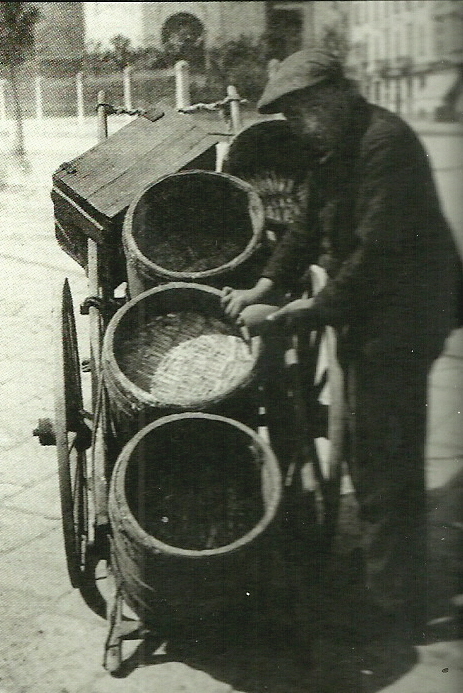
With heavy wooden wagons, the acciugai would begin their pilgrimage first to Piedmont, then to Lombardy, Emilia, and Veneto, selling the preserved fish with the recognizable cry of "anciuìe, anciuìe."
War on the Peaks: Partisan Resistance
Then came World War II; one cannot talk about the Piedmontese Alps without making references to the war. After all, on your walks, you will surely encounter forts, cannons, and memorials in remembrance of the Partisans: young men who, following the armistice of September 8th, 1943, gathered in resistance brigades to fight annihilation by Nazi Germany, using every nook and cranny in the roughness of the forests they knew so well to hide and ambush. If you’re interested, you can encounter the stories of these young men in the many museums dedicated to them along the trails that reach as far as the Langhe. But to isolate yourself between peaks and sky and better understand the libertarian thrust of their motivation, take a trip to Paraloup, a hamlet in the Stura Valley at 1,360 meters, where some 200 young partisans descended into the valley to fight for liberation. Here the Nuto Revelli Foundation keeps the memory of Duccio Galimberti, Dante Livio Bianco, Giorgio Bocca, and Nuto Revelli alive and offers cultural activities, exhibitions, and theater.
New Journeys, Old Paths: Modern Migration
If you thought you were going on a leisurely nature trek in Piedmont, by now you’ve realized that every stone you step on risks slipping you into the folds of history. The fierce irony of the mountains, however, does not end there. Those stones, in fact, come back to threaten with each new great wave of migrants. The scent of the sea of Lampedusa here seems distant, but there is a direct thread between those who arrive on the Sicilian island and those who find themselves here, harnessed in makeshift clothes, trying, once again, to reach France for a better life.
These paths still remain an escape route for those seeking a better future in Northern Europe. Unfortunately, they have not become safer. From 2015 to 2023, 50 migrants lost their lives at the French-Italian borders. The lack of equipment and knowledge, the choice to leave even in winter or in the dark to escape the increasingly tight controls by French police, means that these few kilometers that connect France with Italy become yet another dangerous stage in a journey that is already high risk.
After all, in a supposed Europe without borders, it is on these very mountains that France, since 2015, has made the unilateral choice to revoke the Schengen zone. The extensive checks on trains and trails, however, only makes the undertaking more dangerous, but according to Euro News, almost 90% of migrants finally succeed in their goal, by risking much more.
You will meet these new migrants mainly in the Susa Valley, where from Claviere, a village of 200 inhabitants in the Turin Metropolitan area, they try to reach Montgenèvre, the first village of the same size across the border. We are more than 1,800 meters above sea level, 5 km as the crow flies, but definitely more among the forests. Or, again, in Venitimiglia, where the Via del Sale ends. Here, however, Mayor Flavio Di Muro of the Lega party kicked off Operation “Strade Sicure” in January, which saw the eviction of migrants from some occupied buildings, focusing on the “decorum” of the seaside town and not on the safety of the migrant peoples, with the excuse that they’re passing through and have no intention of integrating. Tasers instead of shelter.
The lucky ones will manage, in spite of everything, to find a cleared path, a sunny day, or even a welcoming patio, like the one of Cédric Herrou, a French farmer and activist on trial for helping 250 migrants crossing the border on what is called the “French Underground railroad.”
Because the mountains are strict and threatening, but sometimes they know how to welcome into their folds the travelers who respectfully cross them, with the same dreams and fears, century after century.
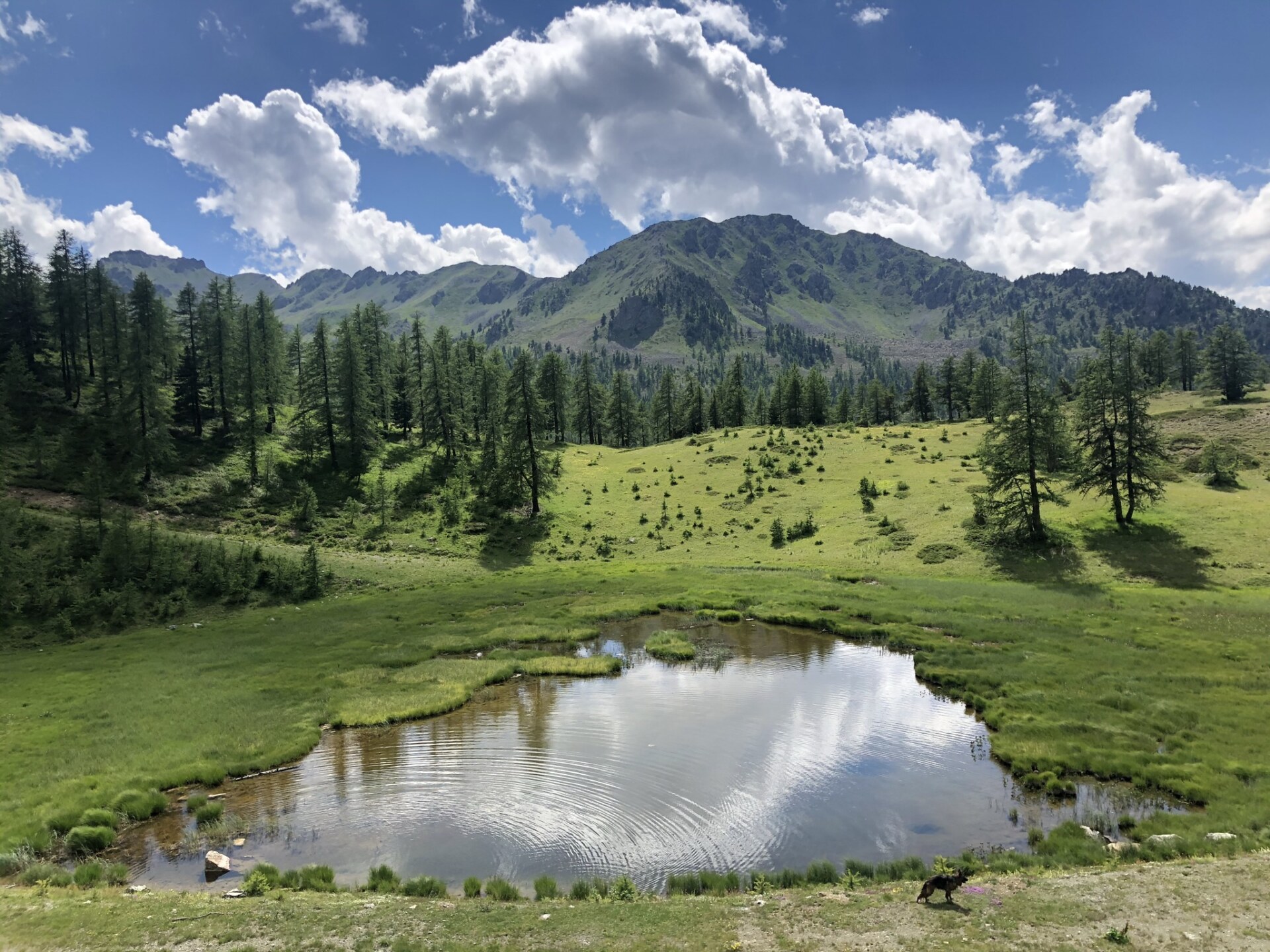
Monti della Luna in Claviere; Photo by Giuliofrr - Own work, CC BY-SA 4.0
